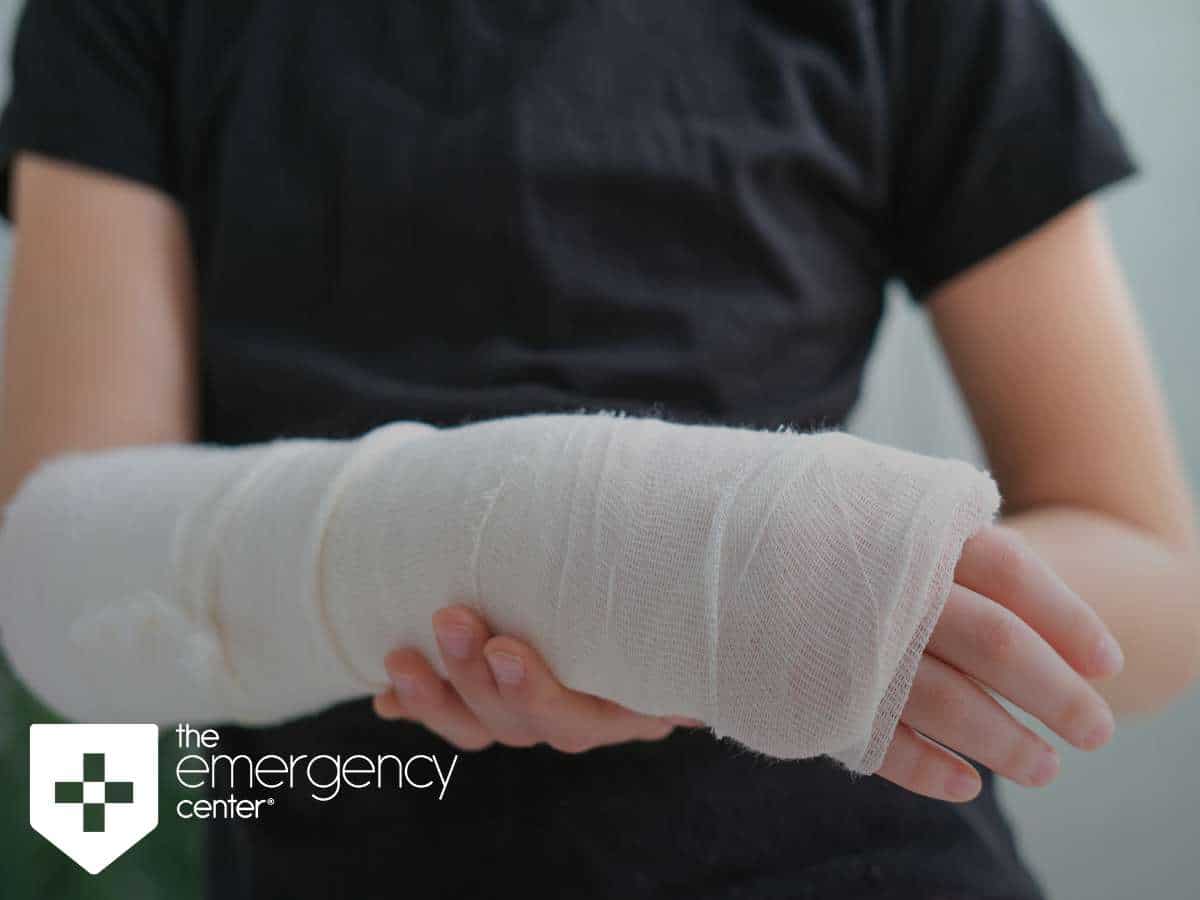Accidents happen, and sometimes they can result in a fractured or broken bone. Whether it’s a fall, a sports injury, or any other mishap, recognizing the signs of a broken bone is crucial for seeking emergency medical attention. Prompt medical intervention ensures accurate diagnosis, appropriate treatment, and a smoother recovery process.

One of the primary indications of a broken bone is intense pain in the affected area. If you’ve experienced a traumatic event and are feeling severe and persistent pain, it may be an indication of a fracture. Additionally, swelling, bruising, and tenderness around the injured site are common signs of a broken bone.
Seek an emergency facility that is equipped with high-resolution diagnostic imaging such as a 64-slice CT scanner and digital X-ray so an ER physician can quickly identify the problem and provide appropriate treatment.
Another apparent clue of a broken bone is a visible deformity or misalignment. If you notice that a limb or joint looks visibly crooked, out of place, or misshapen compared to the unaffected side, it’s likely that a fracture has occurred. However, it’s essential to note that not all fractures result in a noticeable deformity.
A broken bone often hampers your ability to move the affected area or bear weight on it. If you find it challenging to move a limb, experience difficulty in performing daily activities, or have a sudden loss of strength or function, there may be a fracture. This limitation in mobility is especially significant if it persists for an extended period.
Sometimes, a broken bone can cause abnormal sensations near the injury site. Numbness, tingling, or a pins-and-needles sensation can indicate nerve damage resulting from the fracture. If you experience any unusual or persistent sensations, it is important to consult a medical professional for an accurate diagnosis.
In some cases, a broken bone may produce an audible sound at the time of the injury. If you hear a snap, crack, or grinding noise during the incident, it is a strong indication of a fracture. However, it’s worth noting that this symptom may not always be present, especially in less severe fractures.
If you find it challenging or impossible to move a specific body part following an injury, it may suggest a broken bone. Attempting to move the affected area may cause sharp pain, making any further movement uncomfortable or impractical. It is crucial to immobilize the injured area and seek medical attention promptly.
When faced with a broken bone, it’s crucial to make an informed decision about seeking medical attention. While some fractures may be manageable with rest, ice, and elevation, others require immediate evaluation and treatment in the emergency room. The Emergency Center is open 24 hours a day, 7 days a week to evaluate your injury and provide prompt diagnosis. Our emergency facility is equipped with high-resolution diagnostic imaging including a 64-slice CT scanner and digital X-ray to allow us to quickly identify the problem and provide appropriate treatment. When it’s time to leave, we can also give you a MedPack with up to 72 hours’ worth of any necessary medications, allowing you to head straight home to rest instead of stopping at a pharmacy.
Remember, when in doubt, it’s always better to err on the side of caution and seek emergency medical assistance.
The Emergency Center
San Antonio
11320 Alamo Ranch Pkwy
San Antonio, TX 78253
Phone: 210-485-3644
Conroe
4019 I-45 N,
Conroe, Texas 77304
Phone: 936-247-9457
Experiencing abdominal pain? Learn what it could mean by location and when to visit the…
Is your skin redness a sign of something serious? Learn about different types of skin…
Why are ER wait times so long? An emergency room physician explains key delays and…
Are you aware of the dangers of carbon monoxide? Learn prevention tips, symptoms, and how…
Enjoy winter sports safely! Learn how to prevent injuries & discover when to visit emergency…
Worried about ER visits this New Year’s Eve? Learn top safety tips to avoid common…